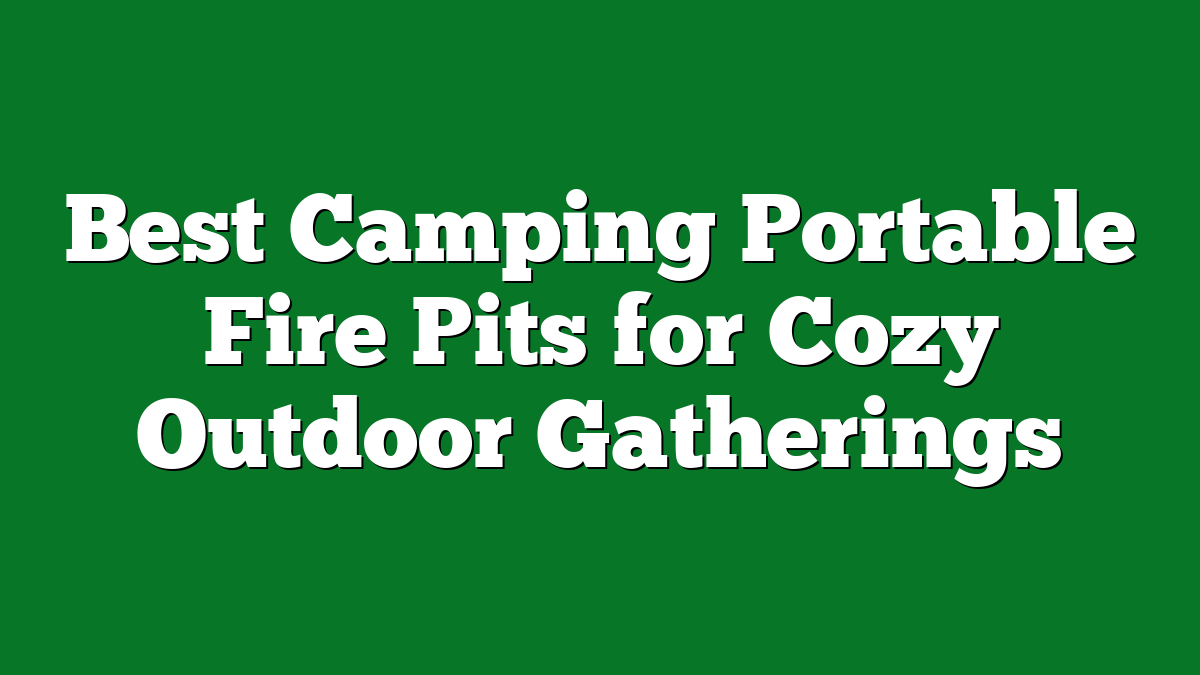Camping is one of life’s simple joys, offering a chance to connect with nature and create lasting memories. But for those in a disability support group, planning a camping trip can feel daunting. I know the challenges firsthand, and that’s why I’ve put together this guide to help make your outdoor adventure enjoyable and accessible.
Overview of Camping With a Disability Support Group
Camping with a disability support group creates unique opportunities for connection and adventure. Outdoor experiences bring people together, allowing them to share skills, stories, and support. I find that nature often fosters an inclusive environment where everyone can thrive.
Accessibility plays a crucial role in planning these trips. Accessible campgrounds, trails, and facilities enhance the experience for individuals with diverse abilities. I’ve seen firsthand how well-planned trips accommodate mobility challenges while ensuring that everyone can enjoy the beauty of the outdoors.
Involving all members in the planning process encourages active participation. I’ve learned that discussing preferences and concerns helps create an itinerary that respects individual needs. Engaging group members in decision-making fosters a sense of ownership in the adventure.
Organizing specialized activities enriches camping experiences. From adaptive fishing techniques to accessible hiking trails, diverse options allow everyone to participate in the fun. Activities can include nature walks, campfire storytelling, and skills workshops that benefit all group members.
Preparation remains vital for successful outdoor excursions. Planning for necessary equipment, medication, and personal support ensures a smooth experience for everyone involved. Bringing along accessible gear, such as portable ramps and adaptive camping equipment, can make a world of difference.
Shared leadership within the group promotes teamwork and collaboration. Assigning roles based on individual strengths helps ensure everyone contributes to the trip. I believe that these shared responsibilities enhance camaraderie and build lasting friendships among participants.
Embracing the great outdoors together not only enriches our lives but also creates cherished memories. By focusing on accessibility and inclusivity, we can ensure that camping trips are enjoyable for everyone in the group.
Benefits of Camping for Individuals with Disabilities
Camping offers unique benefits for individuals with disabilities, enhancing both personal well-being and social connections. Experiencing nature together creates opportunities for everyone to bond, share adventures, and embrace the great outdoors.
Social Interaction
Camping fosters social interaction among participants, breaking down barriers through shared experiences. Group activities—like cooking meals or setting up tents—encourage teamwork while helping to build friendships. Interacting with nature often leads to deeper conversations and laughter, strengthening relationships. Joining a disability support group adds a layer of understanding and camaraderie, making socializing more comfortable and enjoyable.
Physical and Mental Health
Engaging in outdoor activities benefits physical and mental health while allowing individuals to connect with their surroundings. Being in nature reduces stress, promotes relaxation, and enhances mood. Accessible hiking trails or adaptive fishing programs enable everyone to participate in physical activities, improving fitness levels. Exposure to sunlight increases vitamin D levels, which can positively affect overall health. Camping also offers a break from daily routines, providing a refreshing escape that rejuvenates the mind and body.
Choosing the Right Location
Finding the right camping location makes a big difference for everyone involved, especially when accommodating various needs within a disability support group. The perfect spot balances accessibility, safety, and recreational opportunities.
Accessibility Considerations
I prioritize accessibility when choosing a campsite. Look for campgrounds with paved paths, accessible restrooms, and campsites that allow easy maneuverability. Check if the site has designated accessible parking and shelters to protect from weather conditions. Review online resources or contact campgrounds directly for information on their facilities. Accessible hiking trails and fishing spots with adaptive equipment are essential as well.
Safety Features
Safety features play a crucial role in making camping enjoyable for everyone. Select locations with well-marked paths, emergency contacts nearby, and easy access to medical facilities. Investigate if the campground has features like adequate lighting at night and strong cellular signals to communicate in case of emergencies. Always ensure that group members are aware of potential hazards, like wildlife or rough terrain. Planning around safety ensures peace of mind for both campers and their families.
Equipment and Resources
Camping with a disability support group requires careful consideration of gear and resources to ensure a comfortable and enjoyable experience for everyone. The right equipment makes all the difference in enabling participation in outdoor adventures.
Essential Gear for Accessible Camping
When planning a camping trip, specific gear enhances accessibility and comfort. Here are some must-have items:
- Accessible Tents: Look for tents designed for easy entry, featuring wider doors and enough space for wheelchair maneuverability.
- Camp Chairs: Choose lightweight, portable chairs with higher seats and sturdy armrests for easy in-and-out access.
- Sleep Pads and Bags: Opt for padded sleeping mats that offer extra support and insulated sleeping bags that suit various weather conditions.
- Portable Shower and Toilet Facilities: Accessible options provide convenience and privacy, making camping much more comfortable.
- Strollers or Wheelchairs for Trails: When hiking, consider using all-terrain wheelchairs or specialized strollers designed for outdoor use.
Technology Aids and Innovations
Technological advances can significantly enhance the camping experience for those with disabilities. Some useful tools include:
- GPS Devices: Handheld GPS units with topographical maps help navigate trails and ensure safety without relying solely on trail markers.
- Mobile Apps: Numerous camping apps provide information on accessible campgrounds, trail conditions, and even adaptive activity suggestions.
- Portable Power Banks: These keep devices charged, ensuring communication and connectivity during the trip.
- Adaptive Tools: Consider equipment like modified fishing rods or hiking poles designed for ease of use, allowing for a greater range of activities.
- Emergency Alert Systems: Pair devices with a personal emergency alert system to ensure assistance is available when needed.
Utilizing this equipment not only enhances the outdoor experience but also fosters independence and confidence while engaging in shared activities with the group.
Preparing for Your Camping Trip
Getting ready for a camping trip with a disability support group involves careful planning to ensure everyone enjoys an accessible and memorable adventure together.
Planning with Your Support Group
Planning starts with engaging everyone in discussions about their preferences and needs. Involving each member allows us to customize the itinerary, focusing on accessible activities that everyone can partake in. I always find it helpful to prioritize input on the chosen location, types of activities, and daily schedules. Designating roles based on strengths promotes shared leadership, fostering teamwork that enhances our overall experience. Regular meetings keep everyone informed and excited about the upcoming trip, strengthening our bond before we even set foot in the great outdoors.
What to Pack
Packing efficiently is crucial for a successful camping trip. Here’s a concise list of essentials I recommend:
- Accessible Tent: Look for models with features like easy entry and sufficient space for mobility devices.
- Portable Camp Chairs: Lightweight, foldable chairs provide comfort and stability around the campfire.
- Adaptive Sleeping Gear: Specialized sleeping pads or blankets ensure comfort during the nights.
- First Aid Kit: Include supplies tailored to individual needs, such as specific medications or equipment.
- Navigation Tools: GPS devices and maps help keep everyone oriented and safe in unfamiliar areas.
- Emergency Contact Information: Maintain a list of emergency contacts and local services, ensuring peace of mind.
I always verify that everyone includes personal items like medication and hygiene products. By preparing thoughtfully, we’ve minimized stress and maximized the enjoyment of our time together in the wild.
Conclusion
Camping with a disability support group can be one of the most rewarding experiences. It’s all about connection adventure and creating unforgettable memories together. I’ve seen firsthand how the great outdoors can break down barriers and foster friendships that last a lifetime.
By prioritizing accessibility and involving everyone in the planning process we can ensure that all voices are heard and needs are met. With the right preparation and equipment we can make every trip enjoyable and stress-free.
So let’s embrace the beauty of nature support one another and make the most of our outdoor adventures. Here’s to many more camping trips filled with laughter joy and camaraderie!











